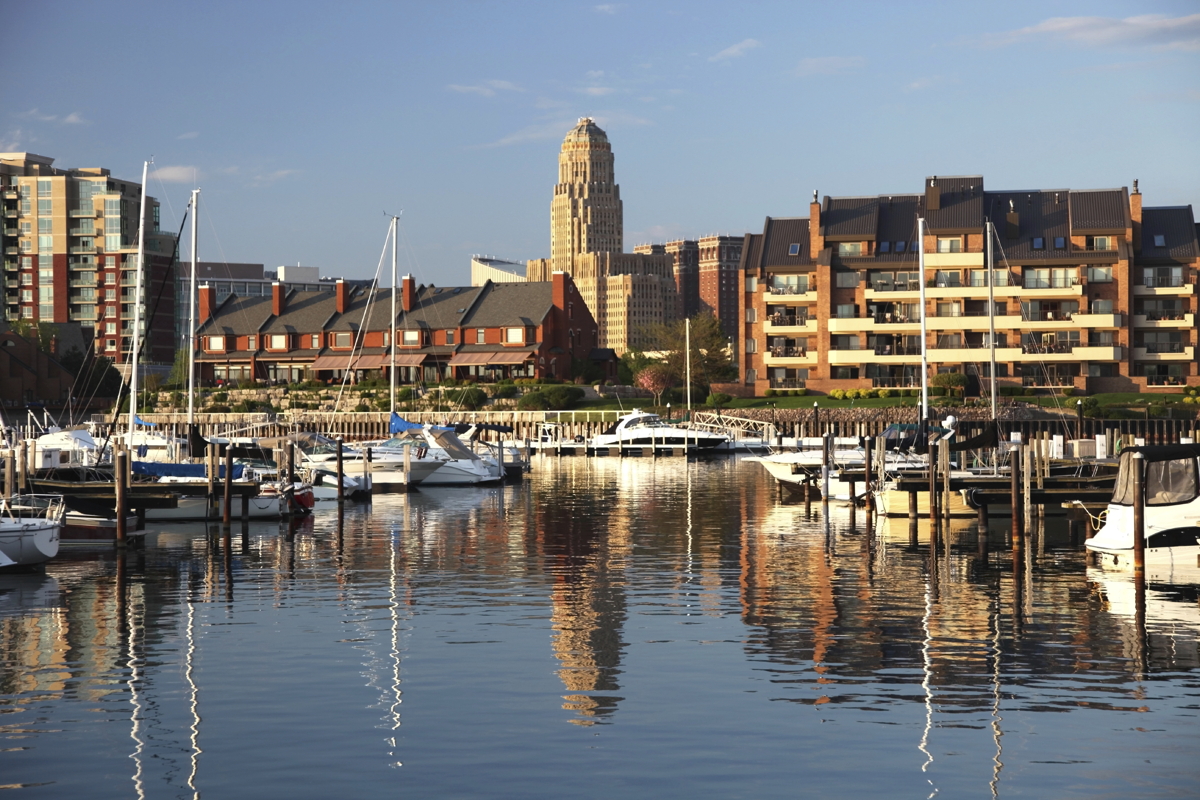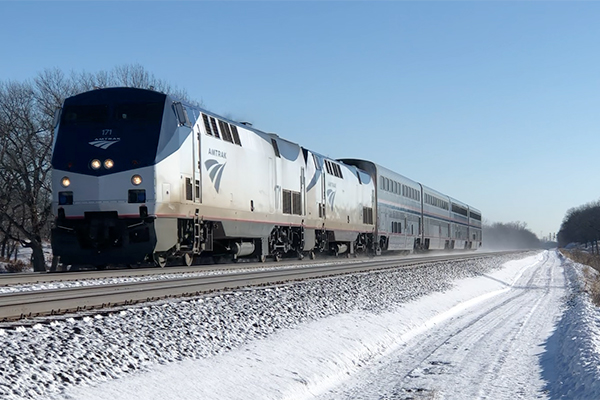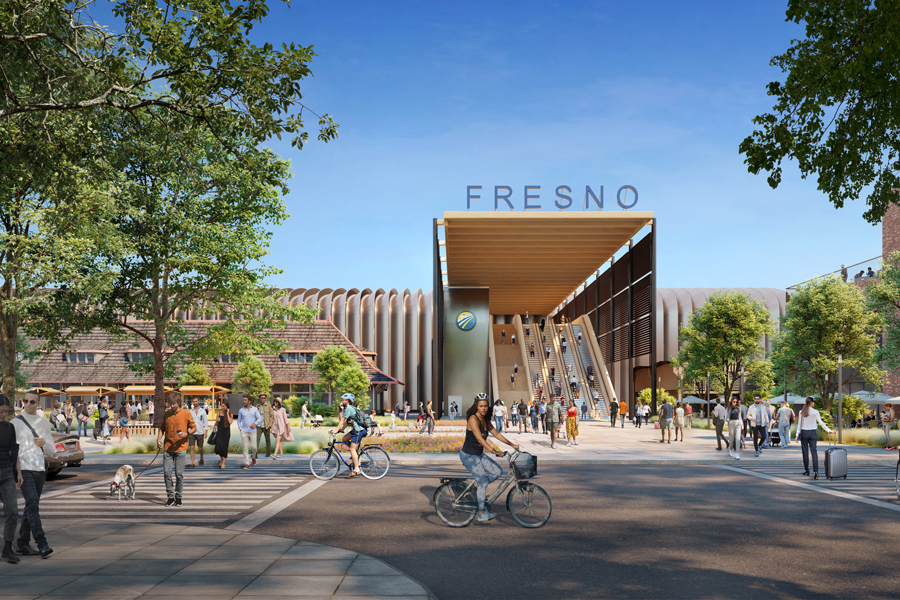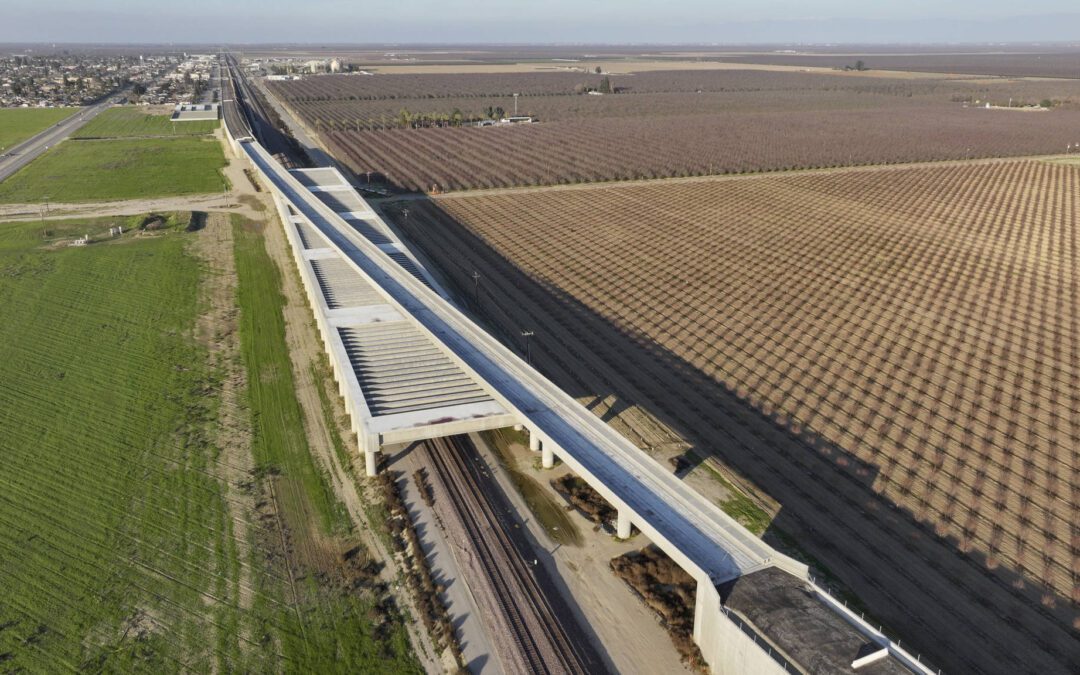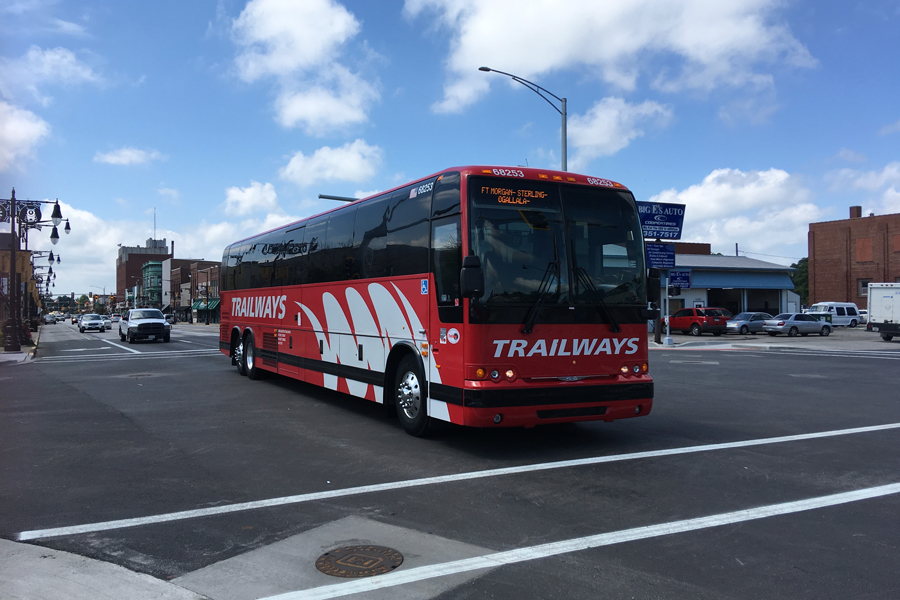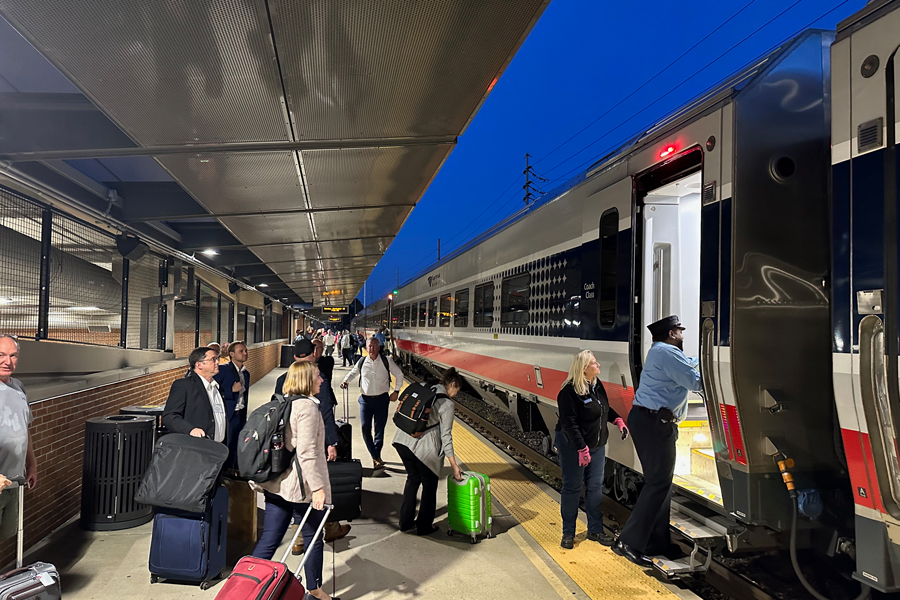Approves $1 billion annually through 2045 The California State Assembly has guaranteed $1 billion annually, through 2045, for the state’s high-speed line from San Francisco to Los Angeles. The move “demonstrates that Californians are standing up to the Trump...
This is a guest post from David Phillips outlining a potential Chicago – New York Corridor timetable.
There is a false dichotomy between regional and long distance trains. It is regularly stated that “no one will ride a train for a long distance; they will fly”. A typical belief is that trains are for trips of less than 300 or 400 miles.
As a result, corridor planning is often limited to a short corridor based on a single large city. For example, states have completed feasibility studies for New York – Buffalo, Buffalo – Cleveland and Cleveland – Chicago.
What if it were a single corridor?
The advantage of running the service through is that many more city pairs receive direct service, without the need to change trains, even if they are in different “corridors. The industry rule-of-thumb is that each required vehicle change cuts the number of riders using the service in half.
Most city pairs in the corridor do not have direct air service; if they do there are few flights. Intercity bus service in the corridor is no longer significant. Driving is the primary competition.
Frequent, reliable rail service would be very attractive, especially if it operated every two hours.
And, it would link two of North America’s biggest cities with several attractive departures.
Sleeping car passengers would be a small part of the operation but the high fares that they pay will make a significant contribution to the top line.
Urgent Next Step: Buy New Trains
Amtrak’s night trains are old and worn out. An order to buy new trains has been delayed.

The Chicago – New York “LakeShore Corridor” is a series of overlapping short corridors. As a result, maximizing volume would require treating this as a single route – even if no one rode the train more than 400 miles. (The upper lines represent 400 miles in each direction from selected cities.)
A Unified Timetable
I have created a theoretical timetable to illustrate the concept.
The travel times are slightly slower than the proposed times in the Midwest Regional Rail Plan, the Ohio Hub Rail Plan and the draft Empire Corridor Tier 1 EIS.
The result is 14 hour end-to-end total (Average speed 68.5 mph). That is 90 minutes shorter than the 1940’s 20th Century Limited (61.8 mph) and 5 hours less than today’s Lake Shore Limited (50.5 mph).
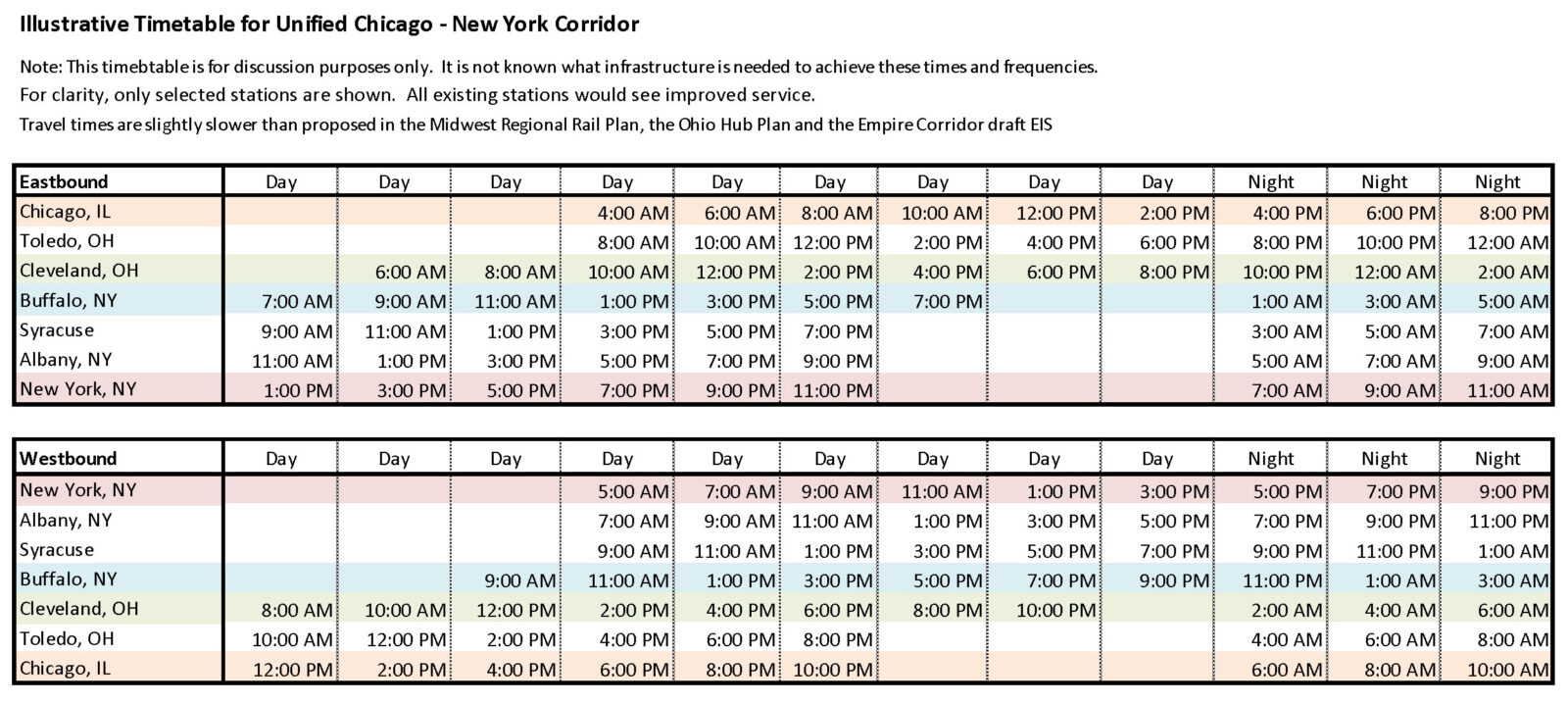
The Chicago – New York “LakeShore Corridor” is a series of overlapping short corridors. As a result, maximizing volume would require treating this as a single route – even if no one rode the train more than 400 miles. (The upper lines represent 400 miles in each direction from selected cities.)
- At NYC: Philadelphia, Washington, Long Island, New Haven
- At Albany: Boston, Montreal,
- At Buffalo: Niagara Falls, Toronto
- At Cleveland: Pittsburgh, Philadelphia, Washington, Columbus, Cincinnati
- At Toledo: Detroit
- At Chicago: Milwaukee, Madison, Twin Cities, St. Louis, etc
In some cases of these cases it may make sense to run cars through, as the Boston section of the Lake Shore Limited breaks off in Albany now. Maybe U.S. passenger trains need to have automatic couplers, as on European high-speed train, to expedite cutting and adding cars.

The Chicago – New York “LakeShore Corridor” is a series of overlapping short corridors. As a result, maximizing volume would require treating this as a single route – even if no one rode the train more than 400 miles. (The upper lines represent 400 miles in each direction from selected cities.)
A legislative fix is needed
Identifying the specific capital improvements required to support this service, including coming to agreement with the railroads, and paying for them, will be a big challenge. However, with the very high productivity of the crews and equipment and the high ridership it should attract there should be minimal need for ongoing operating support.
A hurdle to overcome is that Amtrak will oppose the four added trains running through between corridors, despite the efficiency of this plan since, by definition, they would be “long distance” trains (operating over 750 miles) which, under the law, are part of the National Network which Amtrak has responsibility for funding (three would be day trains, with no sleeping cars, almost unique among Amtrak long distance network; the Savannah-New York City Palmetto is the only current example).
It may take a legislative change to overcome this objection.
Estimating an end-to-end trip time
Based on the state-sponsored studies a 14 hour end-to-end total is feasible (Average speed 68.5 mph). That is 90 minutes shorter than the 1940’s 20th Century Limited (61.8 mph) and 5 hours less than today’s Lake Shore Limited (50.5 mph)
Here is how I came up with 14 hours:
New York to Buffalo: The Empire Corridor links a string of medium-sized Upstate cities to New York City. Pre-COVID service consisted of four daily round-trips, with two terminating at Niagara Falls and one each to Toronto and Chicago. Running time to Buffalo-Depew is about 8 hours. In 2014 the NY State DOT published a report with four alternatives that would reduce the trip to between 5 and hours. For this discussion, I assume a 6 hour trip at an average speed of 72 mph.
Buffalo to Cleveland: The Ohio Department of Transportation proposed upgrades to this segment as part of the “Ohio Hub” network. They suggested a 2 h 30 m trip, but I have left it at 3 h for this discussion.
Cleveland to Chicago: The Midwest Regional Rail Initiative proposes a 4h 45m trip time, but I’ve rounded up to 5h.
The Latest from HSRA
Our Latest Blog Posts
Check out the latest news, updates, and high speed rail insights from our blog!
